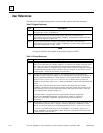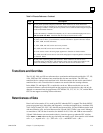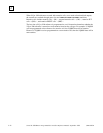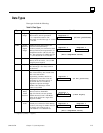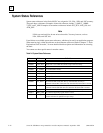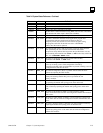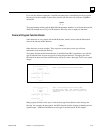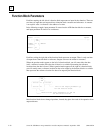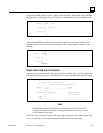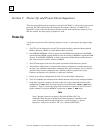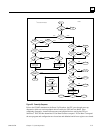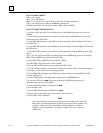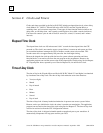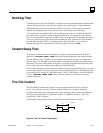
2-28 Series 90-30/20/Micro Programmable Controllers Reference Manual
–
September 1998 GFK-0467K
2
Function Block Parameters
Each line entering the left side of a function block represents an input for that function. There are
two forms of input that can be passed into a function block: constants and references. A constant
is an explicit value. A reference is the address of a value.
In the following example, input parameter I1 comes into the ADD function block as a constant,
and input parameter I2 comes in as a reference.
| _____
|%I0001 | | %Q0001
|——| |———| ADD_|——————————————————————————————————————————————————————————( )—
| | INT |
| | |
| CONST —|I1 Q|—%R0002
| +00010 | |
| | |
|%R0001 —|I2 |
| |_____|
|
Each line exiting the right side of the function block represents an output. There is only one form
of output from a function block or reference. Outputs can never be written to constants.
Where the question marks appear on the left of a function block, you will enter either the data
itself, a reference location where the data is found, or a variable representing the reference
location where the data is found. Where question marks appear on the right of a function block,
you will usually enter a reference location for data to be output by the function block or a variable
that represents the reference location for data to be output by the function block.
_____
| |
—| MUL_|—
| INT |—
—————————| |—————————
| ???????—|I1 Q|—??????? |
| | |—————————
| | | |
| ???????—|I2 | ————— This is the output parameter (Q)
—————————| | for the function block.
| |_____|
|
|_____ These are the input parameters (I1 and I2)
for the function block.
Most function blocks do not change input data; instead, they place the result of the operation in an
output reference.



